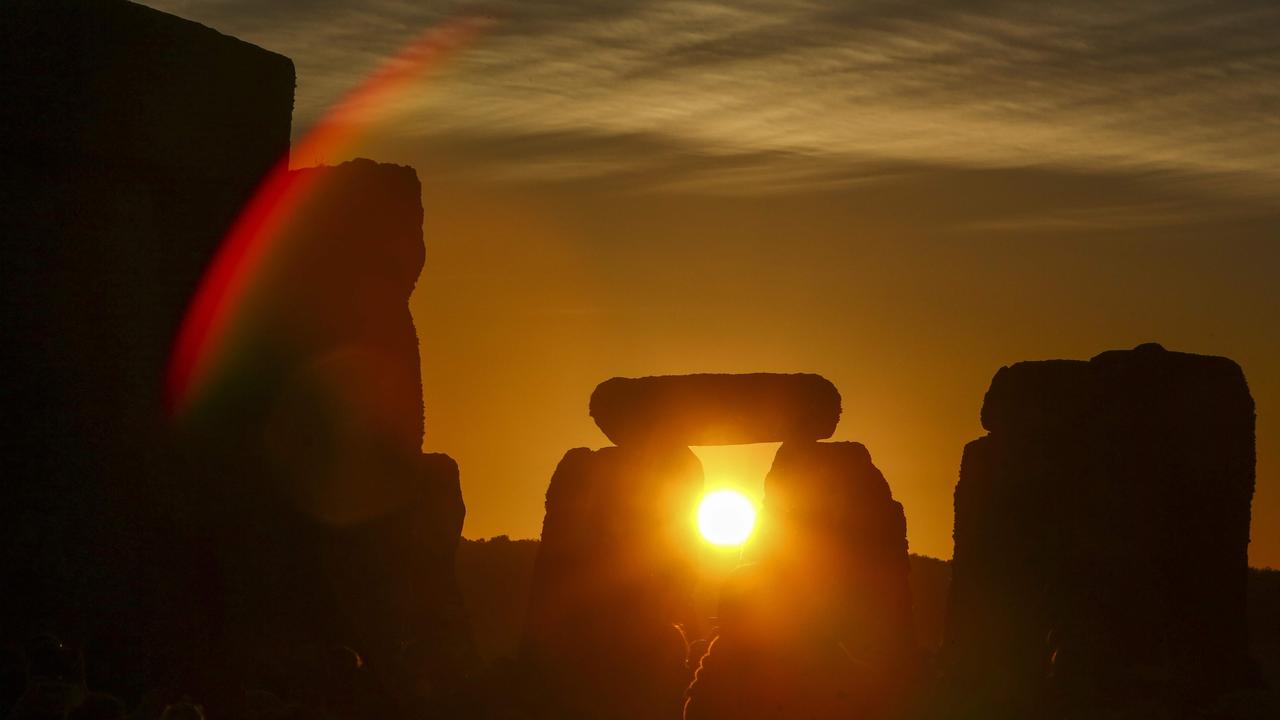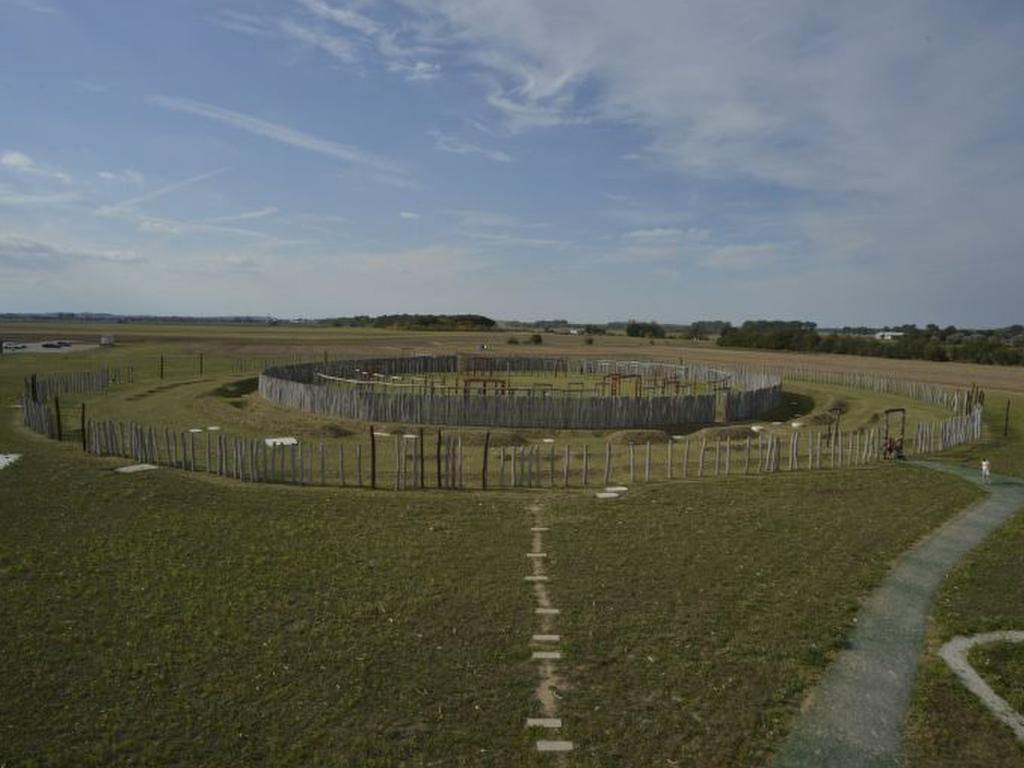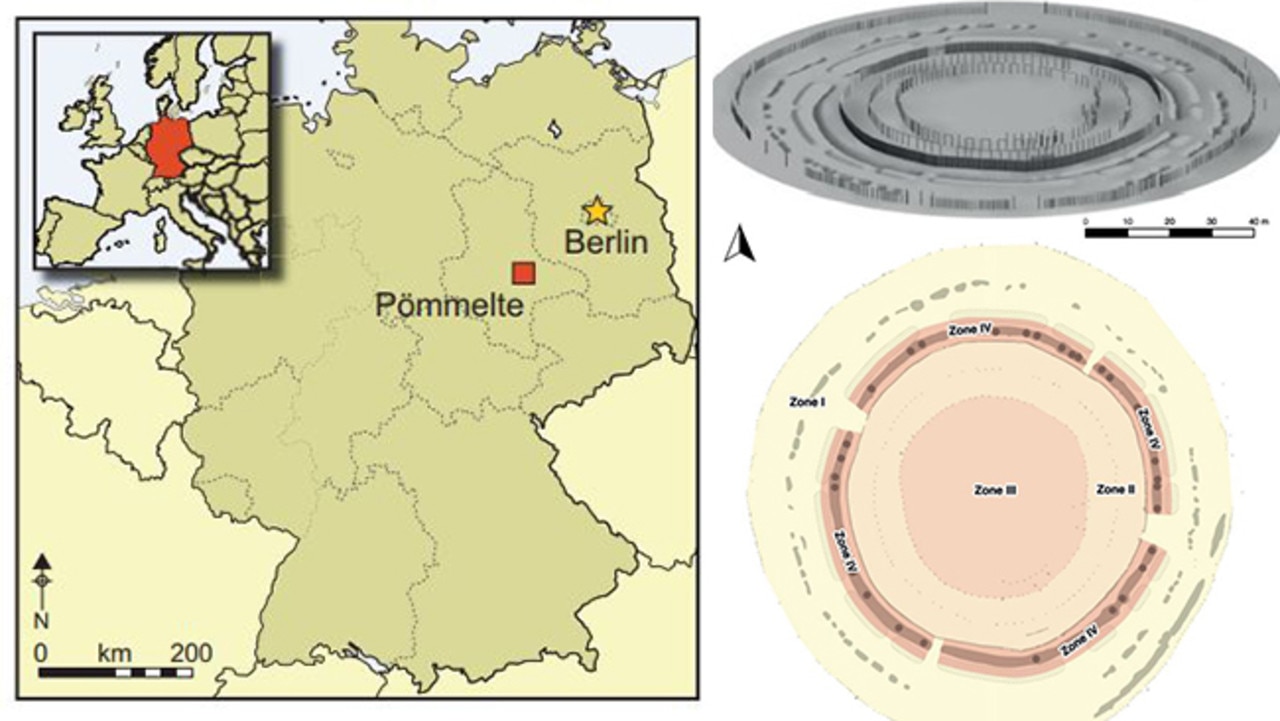German ‘Stonehenge’ reveals gruesome secret
AN ancient site has given up a grisly secret with disturbing implications for one of the world’s most wondrous monuments.

SITES such as Stonehenge are older than memory itself. Stories of Druids and magical rites arose long after the standing stones true purpose was forgotten.
Little can be inferred about the role such monuments played in Neolithic cultures. We know many were aligned to the Sun and stars. There are traces of ceremonial pathways. Now, human sacrifice has entered the picture.
But new excavations near the German town of Pömmelte are raising some disturbing possibilities.
EXPLORE MORE: The dark side of Stonehenge revealed
It’s the site of an ancient stone-age sanctuary, contemporary to Stonehenge itself.
It’s a complex of concentric-ring mounds, ditches and deeply sunken wooden posts.
It’s just one of several sites in Central Europe, Portugal and Spain that indicates circular henge monuments are not uniquely British.

GHASTLY CEREMONIES
Archaeologists say the German site appears to have been a gathering place for community events and rituals.
A series of pits have been uncovered containing evidence these activities. This includes fragments of ceramic pots and cups, stone axes and animal bones.
They reveal the Pömmelte henge was active for some 300 years, starting from 2300BCE.
But among the Pömmelte scraps were some disturbing finds.
The dismembered bodies of 10 women and children.
Lead researcher André Spatzier says it appears the victims had been pushed into the pit. At least one of the teenagers had their hands bound together.
RELATED: Stoneage men almost exterminated themselves
While the archaeologists say they cannot yet be certain of the purpose of their deaths, the idea of ritual sacrifice was a strong possibility. No adult males were found in the pits, and the items they were buried with showed signs of having been ritualistically smashed.
A handful of male bodies were unearthed away from the pits, on the eastern side of the henge. These men, aged 17 to 30, had been interred with great care, in their own graves.
Like Stonehenge, the site itself was not permanently inhabited. There bodies were undamaged.
“The henge monuments of the British Isles are generally considered to represent a uniquely British phenomenon, unrelated to Continental Europe; this position should now be reconsidered,” the researchers write in the journal Antiquity. “The uniqueness of Stonehenge lies, strictly speaking, with its monumental megalithic architecture.”

GERMAN HENGE
The Pömmelte henge is a 115m-wide series of concentric mounds. Many have evidence of ‘wood-henge’ style post holes sunk within them.
It was discovered from the air in 1991, but excavations only began recently.
Excavations show it was built during the transition between the Neolithic Stone Age to the early Bronze Age. This is the same era as Stonehenge.
Stonehenge is positioned in such a way as to mark the arrival of the summer solstice.
Pömmelte henge, however, has its four entrances aligned with dates half way between the equinoxes and solstices. Spatzier says these were key agricultural planting and harvesting dates.
DELVE DEEPER: Rewriting history - where’s the harm in that?
Archaeologists believe Pömmelte henge ended its days about 2050BC in what was likely to have been a ceremonial decommissioning. The wooden post holes had been filled with artefacts. One of the concentric pits was filled with ash — likely from the burnt posts.
“It looks like at the end of the main occupation, around 2050 B.C., they extracted the posts, put offerings into the post holes and probably burned all the wood and back-shoved it into the ditch,” Professor Spatzier told Live Science. “So, they closed all the features. It was still visible above ground, but only as a shovel depression.”



